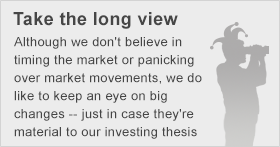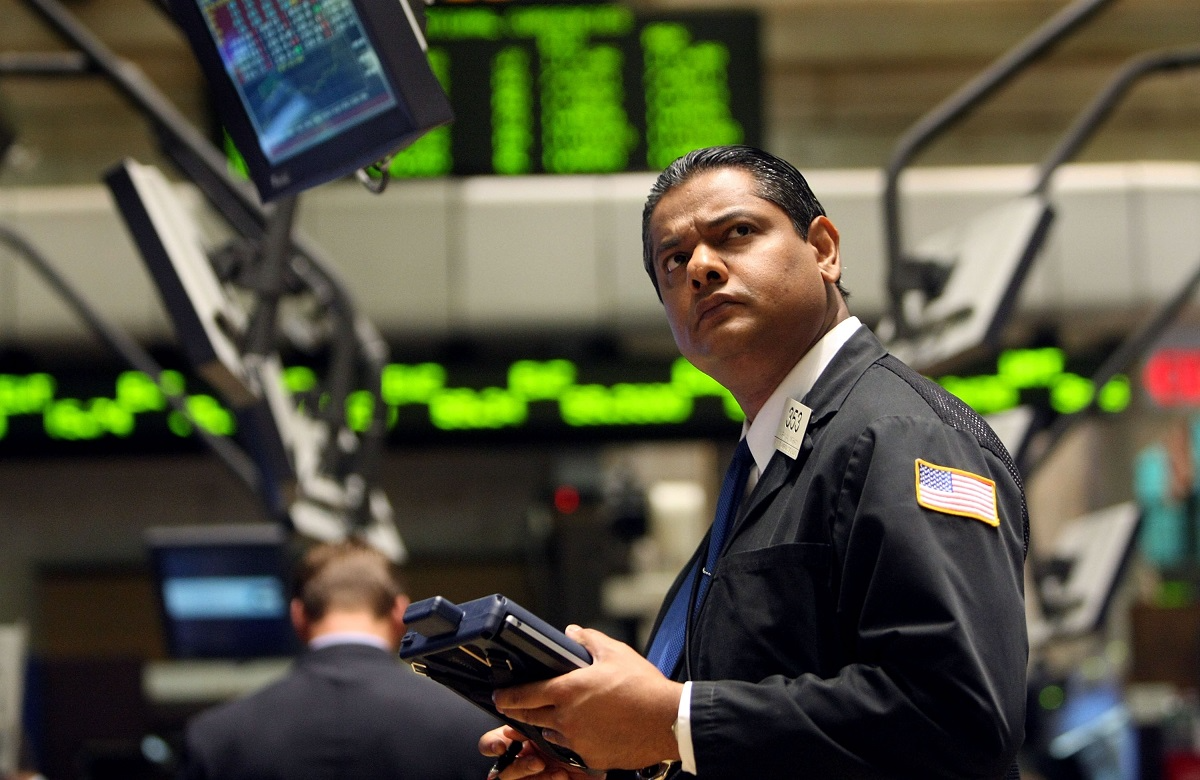
The Dow Jones Industrials (^DJI +0.38%) overcame early weakness to close up 18 points, which was just barely enough to allow the Dow to set its fifth all-time record high for 2014. Yet, even as the Dow joined the S&P 500 (^GSPC +0.88%) at new heights, some investors remain concerned that the Federal Reserve might take away the accommodative monetary policy that has helped prolong the five-year-old bull market sooner than they had hoped. That, in turn, could affect the Dow, both directly through financial stocks like JPMorgan Chase (JPM +1.34%), and indirectly through its effect on overall economic growth.

Federal Reserve Building. Source: Dan Smith.
Earlier today, San Francisco Fed President John Williams echoed the sentiment of other Fed leaders, including Fed Chair Janet Yellen, that the U.S. economy should be able to sustain solid growth for the foreseeable future. Despite concerns that the Commerce Department's Bureau of Economic Analysis raised with its revised report showing a 1% drop in gross domestic product in the first quarter, Williams believes that economic growth should pick up later in 2014 and rise to more typical levels for an expansion.
What's uncertain, though, is how the Fed will react if that economic recovery starts to manifest itself. Williams argued that expecting growth to rise all the way to the 4% to 5% levels that accompanied past expansions is probably unrealistic, with projections of 2.5% to 3% being more likely. Yet, even with those somewhat modest growth estimates, Williams reiterated that, even after quantitative easing ends, the Fed still expects to raise short-term interest rates at some point in the future, and he believes that the process of boosting the Fed Funds rate from its current range between 0% and 0.25% could begin within the next year or so. In his view, rates could rise to 2% to 2.5% by the end of 2016.

Source: Flickr.
Some more hawkish Fed policymakers think that rate hikes should happen sooner rather than later. Kansas City Fed President Esther George believes that hikes should start much more quickly after the end of quantitative easing than most currently expect, and she wants more dramatic increases. By doing so, she thinks that Dow component bank JPMorgan Chase, along with former Dow member Bank of America (BAC +1.86%) and other banks, will be less likely to take unnecessary risks with their capital, potentially heading off another financial crisis. Moreover, some believe that inflationary pressures are finally appearing in the economy, necessitating higher rates in order to protect against rising prices.
The Fed isn't in complete agreement about how to proceed with its monetary policy, but most officials have expressed the desire to take all possible steps to avoid tightening too quickly. Nevertheless, the records in the Dow Jones Industrials reflect the willingness of investors to rely on low interest rates. When that policy ends, it could be a shock to the Dow, and to stock market investors, generally.









